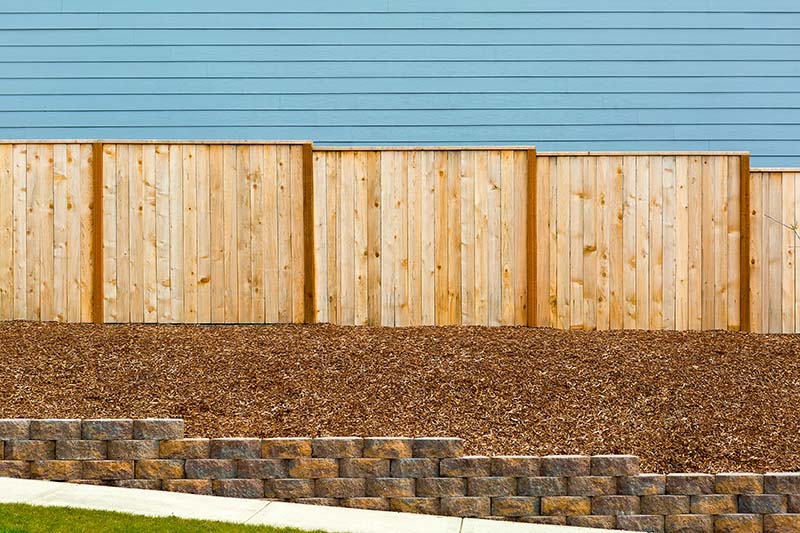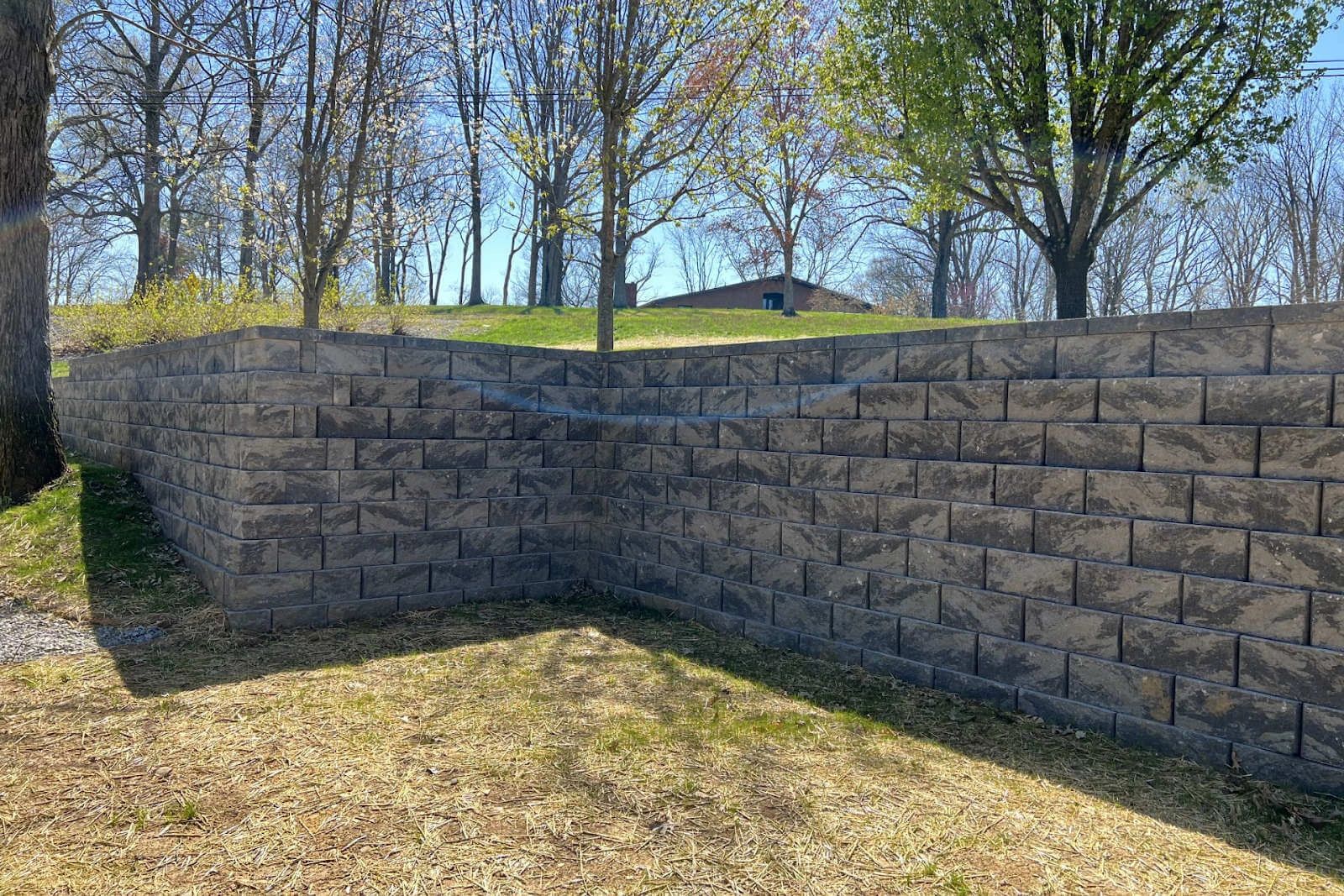OKC Precision Retaining Walls: Building stability and style into your property
Trick Considerations for Structure Efficient Retaining Walls in Your Lawn
When you're thinking about developing a retaining wall surface in your lawn, it's crucial to consider several essential factors. The wall surface's objective, the materials you'll use, and the details dirt conditions can all influence its performance and long life. You'll likewise require to browse regional building regulations and strategy for proper drain. However just how do you guarantee your layout not only fulfills these demands but additionally improves your landscape? Let's check out the important actions with each other.
Understanding the Function of Your Retaining Wall
When you believe regarding constructing a keeping wall surface, consider its major purpose: supporting soil and preventing erosion. Retaining walls provide necessary assistance for sloped landscapes, helping to maintain soil stability. You'll discover they're important in locations where water drainage might or else remove dirt, resulting in costly repairs and landscape damage.
By keeping back earth, these walls produce degree surface areas for yards, outdoor patios, or pathways. This not just enhances your yard's looks yet also promotes much better drain, minimizing water pooling in undesirable locations. If you're taking care of steep inclines, a sound retaining wall can stop landslides, making certain safety and security for you and your home.
Eventually, comprehending the function of your retaining wall will assist your design decisions and help you create a practical, long lasting framework that satisfies your needs. Take a moment to assess your landscape; it'll pay off in the long run.
Selecting the Right Materials
When choosing products for your retaining wall surface, you'll intend to take into account longevity, looks, and expense. Each factor plays an essential duty in guaranteeing your wall stands the examination of time while looking excellent and fitting your spending plan. Allow's check out how to make the very best options for your project.
Product Sturdiness Factors
Picking the ideal materials is essential for the longevity and effectiveness of your retaining wall surface, given that their resilience straight impacts the wall surface's ability to stand up to environmental stress and anxieties. Start by considering your neighborhood climate; products like concrete and stone stand up to moisture and temperature level variations well. If you live in an area vulnerable to heavy rains, go with materials with great drain residential properties, like gravel or permeable blocks, to prevent water buildup.
Some products perform better in specific dirt kinds, so it's essential to match them appropriately. Selecting sturdy materials guarantees your retaining wall surface stands solid, safeguarding your backyard for years to come.
Aesthetic Design Options
Long lasting materials not just ensure your retaining wall's architectural integrity however additionally play a vital function in its visual allure. When picking the right products, consider exactly how they complement your landscape. Natural stone supplies a timeless, rustic look, while cinder block can supply a smooth, modern finish. You might also consider using lumber for a warm, organic feeling. Color and structure matter, too; choose tones that integrate with your home and yard. Don't ignore the wall's shape-- bent walls can develop a softer appearance, while straight lines can feel more structured. By carefully choosing materials that line up with your aesthetic vision, you'll enhance your exterior area while ensuring your wall surface stands solid against the components.
Cost-Effectiveness Evaluation
Selecting the ideal products for your retaining wall isn't just regarding aesthetics; it's also crucial for your budget plan. When selecting materials, take into consideration both upfront costs and long-lasting toughness.
Do not forget to consider upkeep expenses too (OKC Precision Retaining Walls). Some materials, like natural stone, can add beauty and require less upkeep, while others might need regular therapies
Eventually, evaluate the pros and disadvantages of each alternative versus your budget and the wall's desired objective. Investing carefully in materials currently can protect against expensive issues down the roadway. Pick products that balance cost and performance effectively.
Assessing Dirt Conditions and Water Drainage
As you start your job, evaluating dirt problems and drainage is important for the success of your retaining wall surface. Sandy soil drains pipes well but does not have stability, while clay dirt can retain moisture, leading to push on your wall.
Following, evaluate the incline of your backyard. If water naturally streams toward your wall surface, you'll need to implement a drain solution to stop erosion and stress accumulation. Think about setting up perforated pipes or crushed rock backfill behind the wall surface to facilitate drain.
Finally, observe any kind of close-by trees or vegetation; their roots can influence soil security. By understanding your dirt problems and executing appropriate water drainage, you'll create a strong structure for your retaining wall that stands the test of time.
Following Local Building Ordinance
Before you start constructing your retaining wall, you need to research study local regulations to ensure conformity. It's from this source important to comprehend what allows you must acquire, as this can save you from expensive fines or having to redo your work. Taking these steps seriously will assist you construct a secure and reliable structure.
Research Local Regulations
Understanding local laws is vital when planning your retaining wall surface project, particularly since developing codes useful reference can vary significantly by place. Look for guidelines on wall surface height, products, water drainage systems, and architectural honesty. By doing your research study upfront, you can assure your retaining wall fulfills all required codes and blends effortlessly right into your yard.
Acquire Essential Licenses
Once you've looked into neighborhood policies, the next action is to get the essential authorizations for your retaining wall surface job. They may require specific plans or design analyses, specifically for bigger walls. Protecting the best approvals can save you from costly penalties or having to dismantle your wall surface later on.

Preparation the Design and Appearance
As you start preparing the design and aesthetics of your retaining wall surface, think about exactly how it will certainly integrate with the bordering landscape. Consider the products you'll use-- stone, brick, or concrete-- and just how they'll enhance your home's design and the natural environments in your lawn. Select colors and textures that blend perfectly with existing functions like outdoor patios, paths, or yards.
Following, picture the wall's form and height. Bent walls can soften a rigid landscape, while straight lines might convey a more contemporary appearance. Do not fail to remember to incorporate plants and greenery around the wall surface for a natural touch; this can enhance its charm and integrate it into the environment.
Last but not least, bear in mind performance. Your layout ought to not only be visually pleasing however additionally serve its purpose effectively. By thoughtfully preparing these aspects, you'll produce a preserving wall surface that boosts your yard's charm while fulfilling its structural role.
Determining Height and Thickness Needs
To construct a sturdy retaining wall, you need to precisely compute its height and density demands based on the dirt conditions and the elevation of the incline it will certainly sustain. Beginning by evaluating the incline's angle and the kind of soil, as various dirts exert varying quantities of stress.
For walls over 4 feet high, think about a density of at least 12 inches. If the wall is taller, visit here boost the density proportionally to maintain stability.
Next, compute the elevation of the wall by gauging the vertical range it needs to preserve. For every single foot of elevation, you ought to generally prepare for a density of one-third of the wall surface's elevation.
Always keep in mind to represent additional aspects like water drainage and backfill, which can affect your wall surface's layout. Appropriate calculations now guarantee your retaining wall stands strong and lasts for years to come.
Maintenance and Longevity Factors To Consider
While keeping your retaining wall surface could appear like a reduced top priority, ignoring it can cause considerable problems in time. Regular inspections are important; check for splits, protrudes, or any type of indications of water damage. Attending to these issues early can save you from costly repairs in the future.
Watch on water drainage systems, as well. Blocked drains can create water to accumulate, exerting stress on your wall surface and endangering its stability. Clear particles and assurance appropriate flow to keep durability.
You may also intend to review sealing your wall to safeguard it from dampness and weathering. Relying on the material, this could need reapplication every few years.
Last but not least, landscaping around your wall surface can sustain its stability. Stay clear of planting big trees close by, as their origins can weaken the structure. With aggressive maintenance, your retaining wall can offer you well for years to find.

Frequently Asked Questions
Can I Build a Retaining Wall by Myself, or Should I Work with a Professional?
You can absolutely construct a keeping wall surface yourself if you have the right devices and expertise. Hiring a professional warranties it's done correctly, especially for bigger or even more complex frameworks. Consider your skill level before making a decision.
What Are the A Lot Of Common Blunders Made When Structure Retaining Walls?
When constructing retaining walls, you could overlook appropriate drain, skip using the best materials, or disregard reinforcement. These usual mistakes can cause structural failure, so take your time and plan carefully to avoid issues.
How Do I Know if My Retaining Wall Demands Support?
You'll understand your retaining wall needs reinforcement if you discover fractures, leaning, or bulging. Inspect for water pooling behind it or soil erosion near the base. Address these indicators quickly to avoid additional damage.
What Plants Are Suitable for Landscaping Around a Retaining Wall?
When landscaping around a retaining wall, take into consideration making use of low-maintenance plants like succulents, ornamental turfs, or creeping ground covers - OKC Precision Retaining Walls. They'll flourish in those conditions and include charm while avoiding soil erosion around your wall
How Can I Prevent Erosion Around My Retaining Wall?
To stop disintegration around your retaining wall surface, you can grow ground cover, usage mulch, and install drainage systems. Regularly look for water accumulation and change landscaping to redirect drainage far from the wall.